System Diagnostics
1. Checking the warning light for the airbag system.
Set the ignition switch to position "ACC" or "ON", check that the warning light comes on and goes out after about 6 seconds.
Note: If the ignition switch is in the ACC or ON position and the warning light stays on or flashes, check the DTC.
If the warning light comes on occasionally or stays on even when the ignition switch is in the "OFF", check for a short in the warning light circuit.
2. Reading fault codes.
A) Set the ignition switch to position "ACC" or "ON" and wait approximately 20 seconds.
b) Connect the pins "TWITH" ("11") And "E1" ("3") diagnostic socket.
Note: Incorrect connection of pins may damage the system.
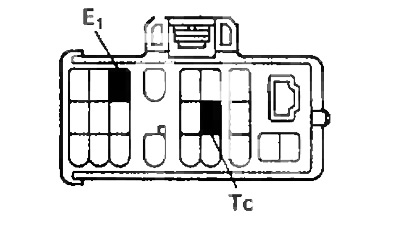
V) If there is no fault, the indicator will flash 2 times per second.

G) If a fault is present, the indicator will flash at a variable rate. Determine fault codes. The figure shows an example of the output of codes "11" And "31".
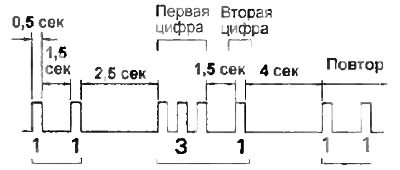
3. Erasing fault codes.
A) Turn the ignition switch to the OFF position (LOCK).
b) Connect two wires to terminals "5" (AB) And "11" (Ts).
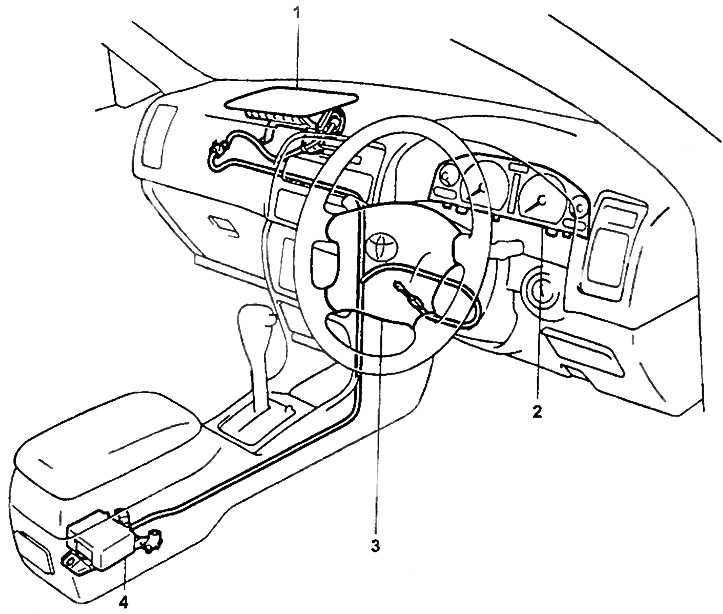
SRS release since 1996
1 - passenger airbag,
2 - signal lamp SRS,
3 - driver's airbag,
4 - central SRS sensor.
V) Turn the ignition switch to the ACC or ON position, wait 6 seconds.
G) At intervals of 1 second, ground the pin first "Ts", then "AB" (simultaneously turning off "earth" from the output ''ts").
d) Make sure the indicator will flash 2 times per second.
SRS Trouble Code Table
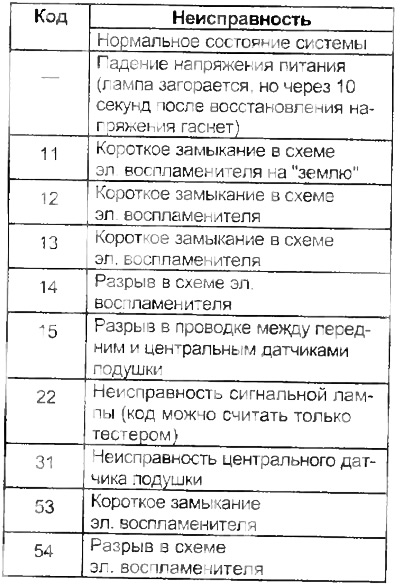
Note:
- When two or more fault codes are indicated, they are displayed starting from the lower number.
- If a code is displayed that is not listed in the table, the airbag sensor is faulty.
Driver airbag
Removal and installation
Disconnect the parts shown in the figure.
When installing, tighten the screw connections to the specified torque.
Installing the spiral cable
1. Install the coiled cable so that the tabs on it line up with the corresponding recesses (see picture).
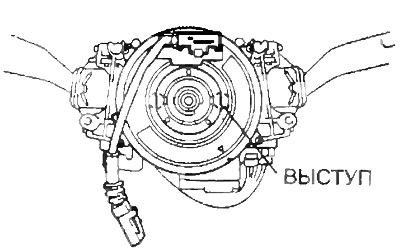
2. Fix the coiled cable with four screws and connect the connector
Note: If installing a new coiled cable, remove the safety pin.

Removal and installation of the driver's airbag:
1 - the upper casing of the steering column,
2 - spiral wire,
3 - the lower casing of the steering column,
4, 5 - bolt cap and steering wheel pad fastening bolt,
6 - steering wheel pad,
7 - steering wheel.

Removing and installing the passenger airbag:
1 - airbag unit,
2 - control panel for the air conditioning and heating system,
3 - connecting casing and air filter,
4 - glove box,
5 - side trim,
6 - finishing the threshold of the left front door.
Passenger airbag
Removal and installation
1. Disconnect the battery.
2. Disconnect the airbag connector.
A) Remove the glove box trim panel, remove the connector from it.
b) Disconnect the connector.
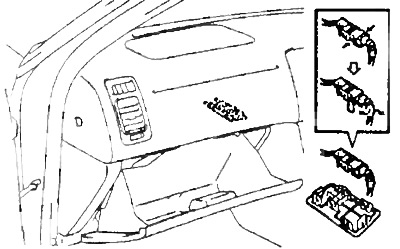
3. Remove the airbag.
A) Remove the 4 screws and remove the bottom trim panel #2 of the instrument panel.
b) Remove the 2 bolts and disconnect the airbag from the instrument panel reinforcement.
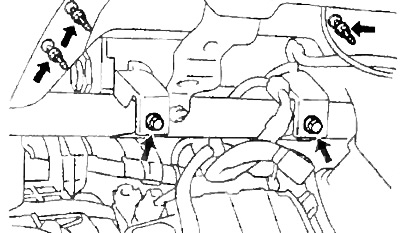
V) Turn away 3 nuts, remove clamps and take a pillow from the panel of tools.

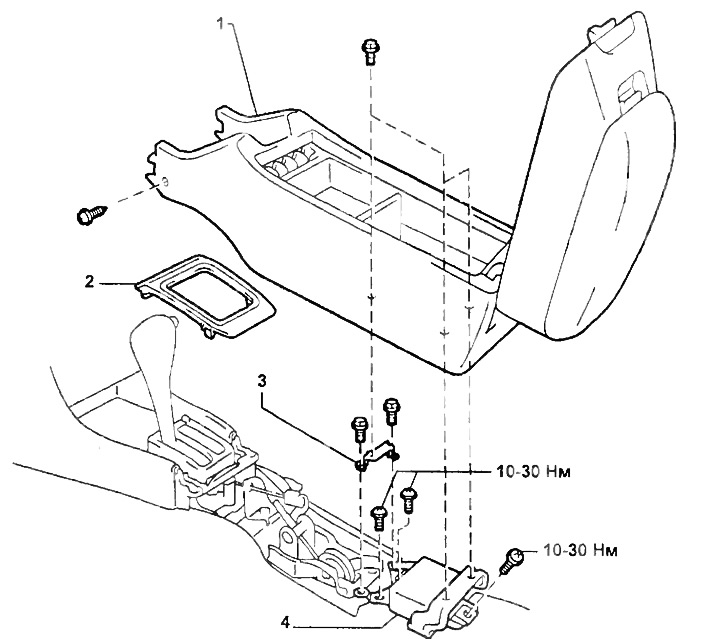
Removing the airbag control unit:
1 - center console,
2 - finishing panel of the automatic transmission selector,
3 - bracket No. 1 for fastening the center console box,
4 - airbag control unit.
Airbag control unit
The airbag control unit is mounted on the floor under the center console. The block consists of a pillow sensor, diagnostic and control circuits, etc.
Removing
1. Disconnect the battery,
2. Remove the center console.
3. Remove the finishing panel of the automatic transmission selector.
4. Remove the airbag control unit.
A) Disconnect the airbag connector from the control unit.
b) Turn away 3 bolts and remove the control block.
5. Check the control unit for deformation, damage. In case of failure, replace with a new one.
Note: do not measure the resistance of the control box circuits, and do not disassemble it.
Installation
1. Turn the ignition switch to the OFF or LOCK position. Disconnect the battery. Carry out the following work no earlier than 90 seconds later.
2. Attach the center cushion sensor with the same bolts.
Note: when installing the block, tighten the threaded connections to the specified torque.
3. Connect the connector to the sensor.
4. Check for trouble codes.
